| 12 June |
• yesterday • tomorrow |
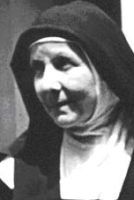
• Maria Barba
• Maria Candida dell'Eucharistia
Daughter of Pietro Barba, an appelate court judge. Raised in Palermo, Sicily. She made her first Communion at age 10, and had an intense devotion to the Eucharist from a very early age. At fifteen she felt a call to religious life, but her family, though pious, opposed her vocation. She was 35 when she was able to follow the call, and she entered the Discalced Teresian Carmel at Ragusa, Italy on 25 September 1919, taking the name Maria Candida of the Eucharist. Eucharistic devotion dominated her spiritual life, and she would spend hours before the Host. Prioress of her house from 1924 to 1947. Greatly expanded the Carmel in Sicily, and promoted devotion to Saint Teresa of Jesus and her Rule within her Order. Wrote a small book titled The Eucharist, a description of her experiences and theological meditations on them.
16 January 1884 in Catazaro, Italy as Maria Barba
12 June 1949 of natural causes
21 March 2004 by Pope John Paul II
O my Beloved Sacrament, I see you, I believe in you! O Holy Faith. Contemplate with ever greater faith our Dear Lord in the Sacrament: live with Him who comes to us every day. - Blessed Maria
O My Divine Eucharist, my dear Hope, all our hope is in You. Ever since I was a baby my hope in the Holy Eucharist has been strong. - Blessed Maria
My Jesus, how I love You! There is within my heart an enormous love for You, O Sacramental Love. How great is the love of God made bread for our souls, who become a prisoner for me! - Blessed Maria
Which hymn would we not sing in obedience to this Divine Sacrament? And what is the obedience of Jesus of Nazareth compared with His obedience in this Sacrament for two thousand years? - Blessed Maria
After having taught me obedience how much He talks to me, instructs me in Poverty, O Sacred Host! Who is more naked, poorer than You - You have nothing, You ask for nothing! O Jesus, let religious souls long for sincere detachment and poverty! - Blessed Maria
If You speak to me of obedience and poverty, what a spell of purity You have over me just by Your glance. Lord, if Your home is in pure souls, who is the soul that relating with You does not become such? - Blessed Maria
I want to be like Mary, to be Mary for Jesus, to take the place of His Mother. When I receive Jesus in Communion, Mary is always present. I want to receive Jesus from her hands, she must make me one with Him. I cannot separate Mary from Jesus. Hail, O Body born of Mary. Hail Mary, dawn of the Eucharist! - Blessed Maria
Heaven itself does not contain more. God, that unique treasure is here! Really, yes really: my God is my everything. - Blessed Maria
I ask my Jesus to be a guardian of all the tabernacles of the world, until the end of time. - Blessed Maria
https://catholicsaints.info/blessed-maria-candida-of-the-eucharist/
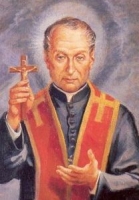
• Caspar Bertoni
• Gaspar Bertoni
• The Apostolic Missionary
Son of Francis, a wealthy lawyer and notary, and Brunora Ravelli Bertoni, he was raised in a pious family. His beloved sister died when Gaspare was quite young. He was educated at home, then by Jesuits and the Marian Congregation at Saint Sebastian's School in Verona, Italy.
At his first Communion Gaspare received a vision and message that he was to become a priest, and he entered the seminary in 1796. On 1 June 1796, troops from Revolutionary France began a 20 year occupation of northern Italy. Gaspar joined the Gospel Fraternity for Hospitals, and worked to help those wounded, ill, displaced, or otherwise harmed by the occupation. Ordained on 20 September 1800.
Chaplain to the sisters of Saint Magdalen Canossa convent. Spiritual director to many including Blessed Leopoldina Naudet, Venerable Teodora Campestrini, and an entire seminary. Well known preacher. One of the leaders in a Europe-wide movement to offer prayers and support for Pope Pius VII when he was imprisoned by Napolean Bonaparte. Established the Marian Oratories. Organized free schools for the poor. Spread devotion to the Five Wounds of Christ.
Founded the Congregation of the Sacred Stigmata of Our Lord Jesus Christ (Stigmatines) on 4 November 1816. Their mission was to serve as "Apostolic Missionaries for the assistance of bishops", and they were under the patronage of Mary and Joseph.
Beset by fevers and a continuing infection in his right leg during the last two decades of his life. Over 300 operations were performed on his leg in an effort to stem the infection. Continued to serve as counselor and spiritual director from his hospital bed.
9 October 1777 in Verona, Italy
Sunday 12 June 1853 in Verona, Italy of natural causes
1 November 1989 by Pope John Paul II
https://catholicsaints.info/saint-gaspare-bertoni/
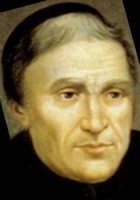
Lorenzo Maria of Saint Francis Xavier
Studied at the Collegio Romano in Rome, Italy; his classmates included Saint Gaspare del Bufalo and the future Pope Gregory XVI. Influenced by the work and preaching of Saint Vincent Mary Strambi. Became a Passionist novice at Monte Argentario in 1801, and made his profession on 20 November 1802. Ordained on 29 December 1805. For seven years the house and all the religious in it were suppressed by order of Napoleon. When Lorenzo was able to return to his vocation, he devoted himself to preaching missions and promoting devotion to the Passion. Showed a great personal devotion to the Child Jesus. Rector of the Passionist Generalate in Rome (his vice-rector was Blessed Dominic Barberi), but spent nearly every day on the road preaching missions.
30 October 1782 in Rome, Italy
• 12 June 1856 in Capranica, Viterbo, Italy of natural causes
• buried in the Passionist Church of Saint Angelo, Vetralla, Viterbo
1 October 1989 by Pope John Paul II
Blessed are Thou, O God our Father, for Thy gift of Blessed Lorenzo Salvi, for his life, his witness and for the love Thou didst give him for the mystery of the Nativity and Infancy of Thy Son Jesus. We ask Thee to reawaken in Thy Church the awareness of the great gift of the Incarnation and the desire to imitate Jesus with simplicity of heart and total trust in Thy Love and Thy Providence. We thank Thee for the deep compassion for the suffering Thou didst grant Blessed Lorenzo and for the strength of his prayer to the Infant Jesus. We believe that he still intercedes for us. We confide to Thee our good desires, for ourselves and for our neighbors, secure to obtain Thy Grace and the protection of Blessed Lorenzo. Amen. - the Passionists
https://catholicsaints.info/blessed-lorenzo-salvi/
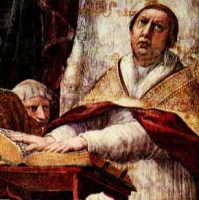
Charlemagne's Pope
The son of Atyuppius and Elizabeth. Priest. Cardinal. Papal treasurer. Elected pope the day after his predecessor's burial, probably so there would not be any outside interference with the decision of the cardinals.
Upon his election, he sent Charlemagne the keys of Saint Peter and the standard of the city of Rome, Italy indicating his choice of Charlemagne as protector of the city and the see. Charlemagne, with his letters of congratulations, sent a fortune which Leo used to build churches and found charitable institutions.
On 25 April 799, members of Pope Adrian I's family hired thugs to attack Leo in a procession. They scarred his face and tried to tear out his toungue and eyes to render him unfit for the papacy. He survived the attack, scarred but tongue and eyes miraculously healed. He fled to Charlemagne's protection at Paderborn, Germany where his enemies tried to turn the king against him. When Leo recovered, Charlemagne escorted him back to Rome. In 800 he conducted a trial of Leo and of his accusers. There was no evidence of Leo's guilt, but there was of his accusers, and they were imprisoned. On Christmas day in 800, Leo crowned Charlemagne emperor, marking the beginning of the Holy Roman Empire.
at Rome, Italy
26 December 795
• 12 June 816
• relics at Saint Peter's, Rome, Italy
1673 by Pope Clement X
https://catholicsaints.info/pope-saint-leo-iii/
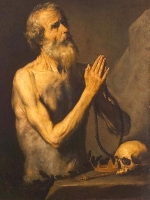
• Onuphrius of Egypt
• Onuphrius the Great
• Humphrey, Onofre, Onofrio, Onophry, Onouphrius
Hermit for 70 years in the desert near Thebais, Upper Egypt. He sought to imitate the solitude and privations of Saint John the Baptist, and lived on the the fruits of a date tree and a palm-tree that grew near his cell. Popular in the Middle Ages, initially with monks and then in general, he became associated with weavers because he was depicted "dressed only in his own abundant hair, and a loin-cloth of leaves".
• c.400
• buried by Saint Paphnutius who had come to him to learn if the hermit's life was for him
• Paphnutius buried Onuphrius in a hole in the mountainside; the hole immediately disappeared
• weavers
• Centrache, Catanzaro, Italy
• old hermit dressed only in long hair and a loincloth of leaves
• hermit with an angel bringing him the Eucharist or bread
• hermit with a crown at his feet
• hermit being buried by two lions (his story was sometimes confused with Saint Jerome's)
• crown
• sceptre
• skull
https://catholicsaints.info/saint-onuphrius/
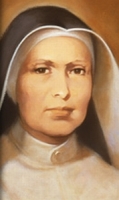
Antonia early felt a call to religious life, and as a teenager began caring for and catechising children in her village. Attended the Institute in San Giorgio Canavese, simultaneously a student and a teacher. In 1806, she and several companions formed a group that would become the Institute of the Sisters of Charity of the Immaculate Conception of Ivrea, dedicated to teaching and catechising children, and home care for the sick; in 1819 they opened their first home, on 7 March 1828 King Charles Felix gave secular approval, and on 10 June 1828 her bishop gave his approval. Antonio spent the rest of her life, and ruined her health, in leading, promoting and expanding the Institute.
12 June 1773 in Pasquaro di Rivarolo Canavese, Turin, Italy
• 25 December 1838 in Pasquaro di Rivarolo Canavese, Turin, Italy of natural causes
• interred in the basement of her parish church
2 October 2011 by Pope Benedict XVI
https://catholicsaints.info/blessed-antonia-maria-verna/

Her legend says that she was a princess in the region of York, England. One of the holy virgins who travelled with Saint Ursula, she was saved from the massacre by the Frisian king Radboud who took her to his castle in Rhenen (in modern Netherlands) where she eventually ran the household. Queen Aldegonde became jealous, and had Cunera strangled and buried in a cattle shed. A miracle led to the discovery of the crime, which led to the conversion of Radboud to Christianity.
There are a number of problems with this story, and nothing reliable about her has survived.
British Isles
strangled to death on 28 October 340 in Rhenen, Netherlands
• cattle
• throats
• Rhenen, Netherlands
• keys (indicative of running the king's household)
• cattle (refers to the cattle shed where she was buried)
• scarf or other cloth around her neck (refers to the method of her death)
https://catholicsaints.info/saint-cunera/
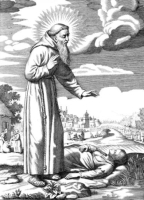
Guy of Cortona
Wealthy layman known for his charity to the poor. After hearing a sermon by Saint Francis of Assisi, he gave away the rest of his riches and became a Franciscan tertiary, received into the order by Saint Francis himself in 1211. Priest. Hermit near Cortona, Italy living in a cell on a bridge. Miracle worker.
c.1185 at Cortona, Italy
• 1245 at the Franciscan convent at Cortona, Italy of natural causes
• on his death-bed he had a vision of Saint Francis coming to lead him to the next life
1583 by Pope Gregory XIII (cultus confirmation)
https://catholicsaints.info/blessed-guy-vignotelli/
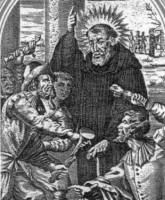
Odulfo, Odulphus
French nobility. Pious and studious youth. Augustinian priest. Curate of Oresscoth in Brabant. Worked with Saint Frederick of Utrecht to evangelize the Frisons. Canon of the cathedral at Utrecht, Netherlands where he worked to set a good example of prayer and fasting to laymen. Founded the Augustinian monastery at Stavoren.
Brabant (in modern Belgium)
• c.855 of natural causes
• relics stolen in 1034
• relics turned up in London, England, and were interred at Evesham Abbey
https://catholicsaints.info/saint-odulph-of-utrecht/
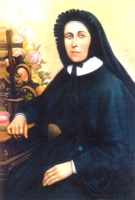
Mercedes of Jesus
Nun in 1873. Founded the Institute of the Sisters of Saint Mariana of Jesus (Marianitas Sisters) to care for and educate orphans and poor girls, and to help prostitutes escape the life.
1828 in Baba, Los Ríos, Ecuador as Mercedes Molina
12 June 1883 in Riobamba, Chimborazo, Ecuador of natural causes
1 February 1985 by Pope John Paul II in Guayaquil, Ecuador
https://catholicsaints.info/blessed-mercedes-molina-ayala/
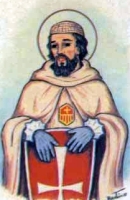
Corrado
Born to the French nobility. Mercedarian knight. In 1300 he ransomed 228 Christians enslaved in Tunis, Tunisia by Muslim raiders. Returning to France, he was sent to Algiers, Algeria where he ransomed 218 more.
France
1310 in the Mercedarian convent of Sainta Maria in Avignon, France of natural causes
https://catholicsaints.info/blessed-conrad-of-maleville/
Priest during the reign of Valerius Maximianus Galerius. Earliest known bishop of Epiphania, Cilicia (in modern Turkey) in 325. Attended the Council of Nicaea. Bishop of Nicomedia; opposed the Arians who were just starting to spread in the area. Writer whose works were recommended by Saint Athanasius of Alexandria for their defense of the faith. Suffered in the persecutions of Diocletian.
early 4th century of natural causes
https://catholicsaints.info/saint-amphion-of-nicomedia/
First hermit on Mount Athos in 8th century Greece.
Legend says that he was a soldier captured by Muslims, but freed through the intercession of Saint Simeon. He made a pilgrimage to Rome, Italy and was given a monastic habit by the (unnamed) pope. Moved by a vision of the Blessed Virgin Mary, he became a hermit for 50 years on Mount Athos, fighting off assaults of the devil and starting a tradition for other hermits to follow.
https://catholicsaints.info/saint-peter-of-mount-athos/

Aeschilus, Aeschylus, Eskill, Eskillo, Eschillo
Missionary, working in Sweden with Saint Ansgar. Bishop. He converted so many pagan Swedes to Christianity that he was condemned to death by King Swerker the Bloody. Martyr.
in England
stoned to death on Good Friday 1131
bishop with three stones
https://catholicsaints.info/saint-eskil/
Monk on Mount Athos in Greece for three years. Monk at the Valaam monastery in northern Russia. Founded a monastery in the island of Konev, putting it under the Rule he had learned on Mount Athos.
Novgorod, Russia
1447 of natural causes
https://catholicsaints.info/saint-arsenius-of-konev/
Chlodobald, Chrodobalde, Ludbald, Rodebald
Spiritual student of Saint Amandus of Belgium. Benedictine monk at the monastery of Elnone (modern Saint-Amand-les-Eaux) in Tournai, Flanders (in modern Belgium). Provost of the abbey of Marchiennes near Douai, France.
Gaul (modern France)
7th century
https://catholicsaints.info/saint-chrodobald-of-marchiennes/
Lochin, Lochein
Born a princess, the daughter of Briga and King Conall Derg of Oriel in northern Ireland. Sister of Saint Fanchea of Rossory, Saint Carecha of Clonburren, Saint Darenia of Cashel and Saint Enda of Arran. No details of her life have survived.
5th century Oriel, Ireland
c.500
https://catholicsaints.info/saint-lochinia-of-ireland/
Born to a working class family. Became a Cistercian monk at Saint Nicholas, Corno, Italy. Lived as a hermit at Ocre in the Abruzzi region of Italy. Founder and abbot of Santo Spirito monastery near Val d'Ocre. As a self-imposed penance, he slept standing the last 37 years of his life.
at Rodi, Italy
1248 of natural causes
https://catholicsaints.info/saint-placid-of-ocre/
Premonstratensian monk in 1641. Canon of the Strahov monastery outside Prague, Bohemia (modern Czech Republic). Ordained in 1647. Prior of his monastery. Spiritual director and confessor to the sisters in the Doksany convent.
1622 in the area that is modern Czech Republic
1678 of natural causes
https://catholicsaints.info/blessed-stefan-kielman/
Daughter of Domenico Leonti and Bernarda Maiolino; sister of Blessed Angelica of Milazzo. Franciscan Minim tertiary lay woman. Her guardian angel was sometimes visible to other people.
16th century in Milazzo, Italy
1591 of natural causes
https://catholicsaints.info/blessed-pelagia-leonti-of-milazzo/
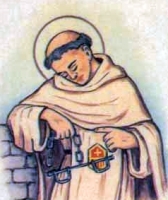
Mercedarian friar. Ransomed 80 Christians from Muslim slavery in North Africa.
1490 at San Martino convent, Oran, Algeria of natural causes
https://catholicsaints.info/blessed-antonio-de-pietra/
Torannan
Fifth-century missionary bishop to the Picts in Scotland, consecrated by Saint Palladius of Ireland. He used Abernethy, Scotland as his base of operations. Founded the monastery of Culross in Fifeshire, Scotland.
https://catholicsaints.info/saint-ternan-of-culross/
Cirino
Martyr.
• Rome, Italy, date unknown
• buried in the Callistus catacombs in Rome
• relics transferred to the Jesuit college in Antwerp, Belgium in 1606
https://catholicsaints.info/saint-cyrinus-of-antwerp/
Christianus, Croistan O'Morgair
Brother of Saint Malachy of Armagh. Influential bishop of Clogher, Ireland in 1126.
1138
https://catholicsaints.info/saint-christian-omorgair-of-clogher/
Martyred in the persecutions of emperor Hadrian.
Armenian
• crucified in the early 2nd century
• relics enshrined in Gueldre, Limburg, the Netherlands
https://catholicsaints.info/saint-valerius-of-armenia/
Bishop of Aenos, Rumelia (modern Enez, Turkey). Contemporary of Saint Athansius. Strongly opposed Arianism, and was driven from his diocese by the Arian emperor Constantus.
343 of natural causes
https://catholicsaints.info/saint-olympus-of-aenos/
Martyred in the persecutions of emperor Hadrian.
Armenian
• crucified in the early 2nd century
• relics enshrined in Gueldre, Limburg, the Netherlands
https://catholicsaints.info/saint-galen-of-armenia/
Bishop of Chalons-sur-Seine, France in 864; he served the last 21 years of his life.
885 of natural causes
https://catholicsaints.info/saint-gerebald-of-chalons/
Seventh century confessor of the faith. No details about him have survived.
https://catholicsaints.info/saint-cuniald/
Fifth-century monk and abbot.
Ardcavan, Ireland
https://catholicsaints.info/saint-cominus/
Seventh century confessor of the faith. No details about him have survived.
https://catholicsaints.info/saint-geslar/
Three Christians who were martyred at different times and places, but whose relics have been collected and enshrined together - Celsus, Dionysius, and Marcellinus
relics enshrined in churches in Bologna and Rome in Italy
https://catholicsaints.info/martyrs-of-bologna/
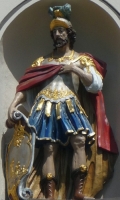
Four members of the Imperial Roman nobility. They were all soldiers, one or more may have been officers, and all were martyred in the persecutions of Diocletian - Basilides, Cyrinus, Nabor and Nazarius.
• 304 outside Rome, Italy
• buried along the Aurelian Way
https://catholicsaints.info/martyrs-of-rome-12-june/
Three Christian men who became Benedictine monks at the Saint James Abbey in Regensburg, Germany, then hermits at Griestatten, and whose lives and piety are celebrated together. - Marinus, Vimius and Zimius.
https://catholicsaints.info/three-holy-exiles/
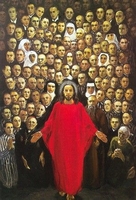
• Polish Martyrs
• 108 Polish Martyrs of the Nazis
• 108 Blessed Polish Martyrs
Among the millions murdered by Nazis in World War II, many were Poles killed for being Poles, and many were Catholics killed for being Catholic. As emblematic of this group, 108 Polish Catholics who were murdered for their faith, and whose faithfulness was attested by by witnesses, were beatified as a group of by Pope John Paul II. They each have a separate memorial day on the calendar, and a separate profile in this system, and will appear on the appropriate pages as the calendar rolls around, but they are celebrated as a group today.
• Adalbert Nierychlewski
• Adam Bargielski
• Aleksy Sobaszek
• Alfons Maria Mazurek
• Alicja Maria Jadwiga Kotowska
• Alojzy Liguda
• Anastazy Jakub Pankiewicz
• Anicet Koplinski
• Antoni Beszta-Borowski
• Antoni Julian Nowowiejski
• Antoni Leszczewicz
• Antoni Rewera
• Antoni Swiadek
• Antoni Zawistowski
• Bogumila Noiszewska
• Boleslas Strzelecki
• Boniface Zukowski
• Bronislao Kostkowski
• Bronislaw Komorowski
• Bruno Zembol
• Czeslaw Jozwiak
• Dominik Jedrzejewski
• Edward Detkens
• Edward Grzymala
• Edward Kazmierski
• Edward Klinik
• Emil Szramek
• Fidelis Jerome Chojnacki
• Franciszek Dachtera
• Franciszek Drzewiecki
• Franciszek Kesy
• Franciszek Rogaczewski
• Franciszek Roslaniec
• Franciszek Stryjas
• Grzegorz Boleslaw Frackowiak
• Henryk Hlebowicz
• Henryk Kaczorowski
•
between 5 October 1939 and April 1945 in Germany and Nazi-occupied Poland
13 June 1999 by Pope John Paul II in Warsaw, Poland
https://catholicsaints.info/108-martyrs-of-world-war-ii/
• Our Lady of Montalto
• Florida Cevoli
• Hildegard Burjan
• Philip of Palermo
• Rychwyn ap Helig
CatholicSaints.Info Portable Edition